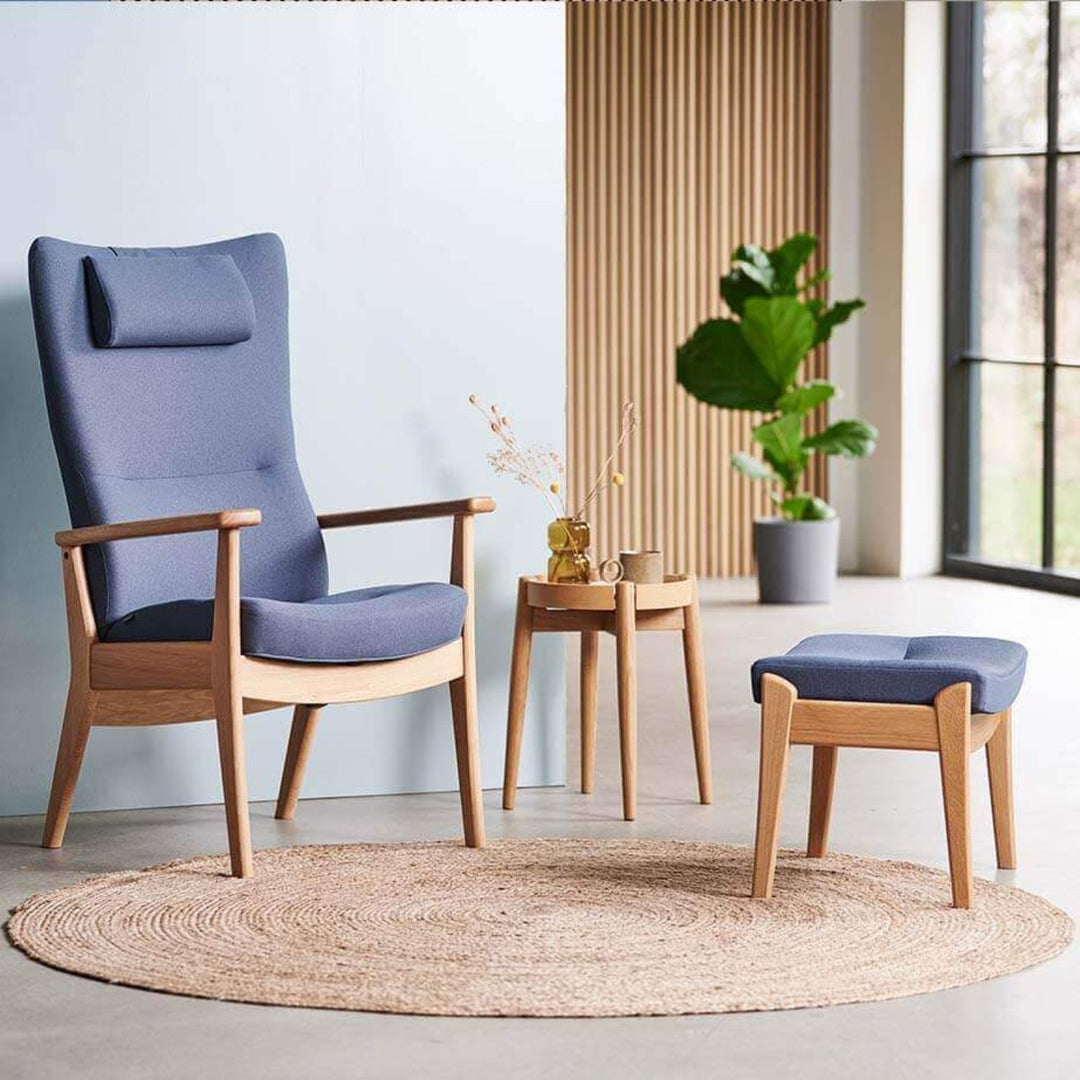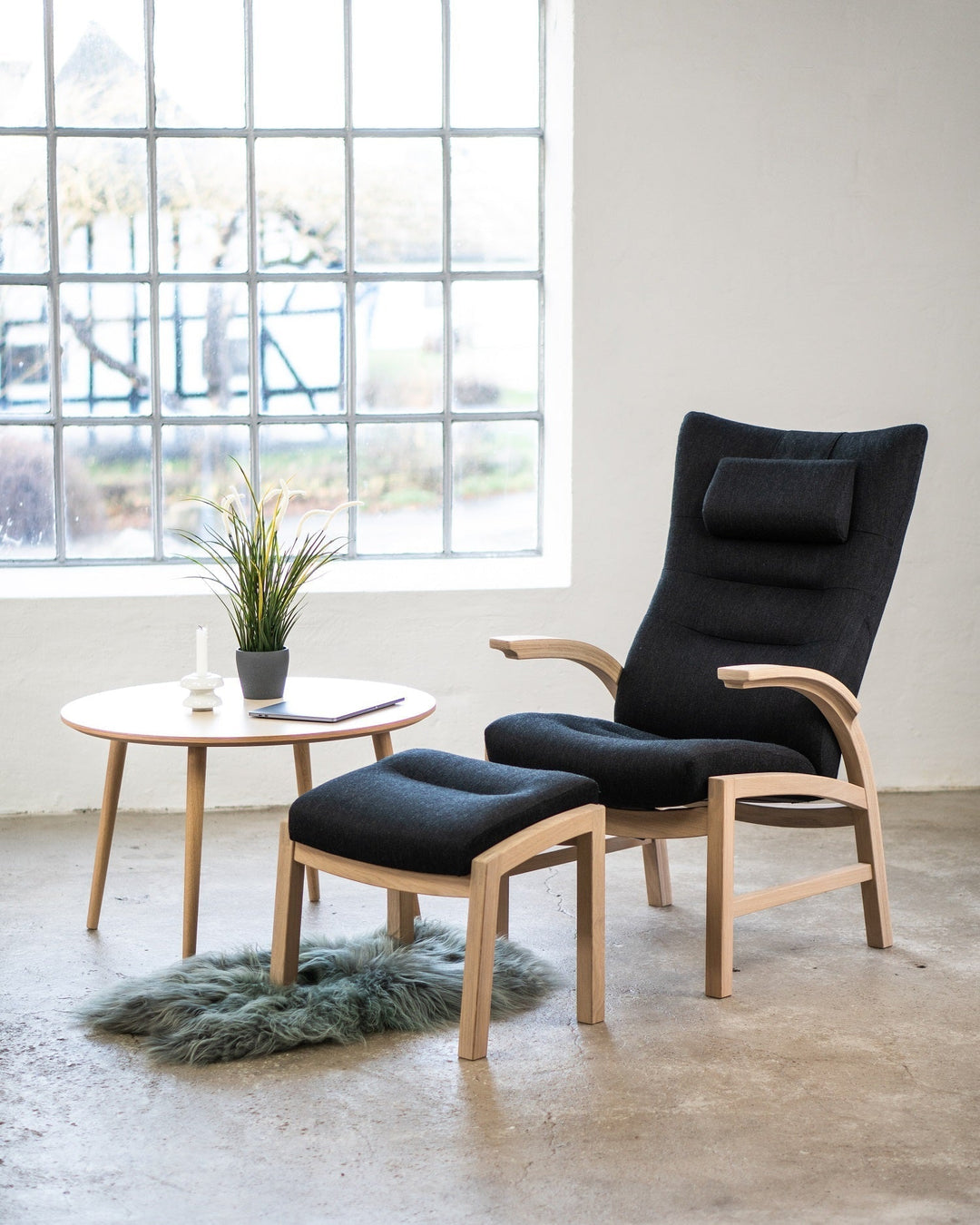If you want to delve deeper into the differences between chair types, you can read more about the difference between an armchair and a recliner . If you are looking for models with maximum support, you will also find recliners with high backs and adjustable comfort that combine classic design with ergonomic functionality.
Armrests upholstered or wooden?
Armrests play a much bigger role in the seating experience than you might think. Padded armrests provide soft and relaxed support, especially if you sit in the chair for a long time to read or watch TV. They reduce pressure on the forearms and elbows and are therefore often the most comfortable choice for everyday use.
Wooden armrests, on the other hand, provide a more precise grip when getting up or sitting down – an important detail for many, where functionality and stability are in focus. At the same time, wooden armrests are a clear design marker, where oak or beech with different finishes give the chair a unique visual touch.
Upholstery and support in an armchair
Inside, it is the foam that determines how the chair feels over time. A high foam firmness provides a more upright sitting experience with good support, while softer padding invites you to sink further into the chair. Seat depth and seat height are at least as crucial, as they affect the pressure distribution in the back and legs – and thus how relaxed the body is after half an hour of use.
At Farstrup, both seat depth and seat height can be adjusted, so the chair is adapted to the individual user. This means that comfort is not standardized, but tailor-made. A crucial point if the chair is to be used daily for many years.
Armchairs with extra functions for when the need arises
For many, it is the extra features that complete the chair. A footrest or a matching stool relieves the legs and lower back and gives the body the opportunity to stretch out completely. That is why there are footstools that match your armchair , so that the whole works both ergonomically and aesthetically.
For others, it's about options that provide extra support in everyday life. A seat lift, motorized backrest or castors make the chair practical for those who need mobility assistance or want to be able to change positions with a light push. These solutions are especially found in retirement chairs with support functions , where design and functionality go hand in hand.
Your checklist before buying an armchair
When choosing your next armchair, it can be an advantage to ask yourself a number of very specific questions. They will help you make a choice that suits your everyday life, your home decor and your personal needs.
First, it's worth considering how much the chair will be used in everyday life. Is it your regular place for TV evenings and reading, or just an extra seat for shorter stays? The more hours you use the chair, the more important the choice of materials and ergonomic adjustments become.
Then the rhythm of the home comes into play. If you have children or pets, you may want leather that is easy to wipe clean, or a robust textile type that can withstand play and activity. If the chair is to be used for social evenings, a fabric cover can create a warmer atmosphere, while black or brown leather signals more classic elegance.
Also think about how the chair will interact with the room. If you want a piece of furniture that blends in calmly with the interior, neutral fabric shades or light beech may be obvious. On the other hand, if the chair is to make a strong statement, colors such as white or red leather or a black-stained oak frame can give a dramatic and graphic expression.
Comfort is not just about upholstery and wood. Back height, armrests and footrests are crucial to the sitting experience. A high back provides support for the neck and shoulders, padded armrests are nice for long sessions, while a separate stool can be the icing on the cake. Also consider whether you will benefit from a seat lift, electric backrest or wheels if the chair is to function as a practical support in everyday life.
When choosing a type of wood, Farstrup has a choice between oak and beech. Oak has a more pronounced grain structure and a golden look, while beech provides a calmer and more uniform surface. Surface treatments such as white oiled, black stained or classic mahogany can change the look significantly and ensure that the chair matches the rest of the interior.
Finally, it is worth remembering that a chair should be tried on and adjusted. At Farstrup, seat height, seat depth and upholstery can be adjusted to fit your body exactly. Therefore, we always recommend that you try different models before making a decision.









